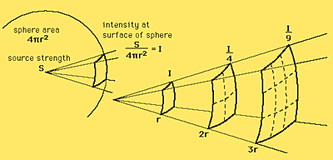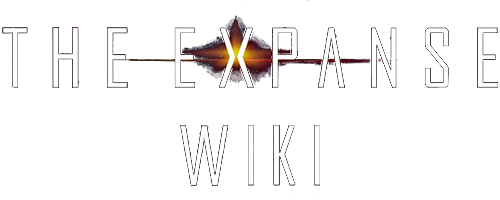According to NASA[1], Mars receives less than half the sunlight that would have been cast on Earth, due to an inverse square relationship between the intensity of incident sunlight and the distance from the sun, or I ∝ 1⁄d² where I is the intensity and d is the distance.
| “ | I ∝ 1⁄d² | „ |
| — Intensity is an inverse relationship to the square of the distance | ||
- where:
- I — intensity
- d — distance from sun (light source)
- (Note: ∝ is a proportionality symbol, as opposed to an equality symbol, it is a way to compare information or establish a relationship between two variables.)
Even though Mars has a thinner atmosphere, due to the phenomenon described herein, it still does not receive the same intensity of light as the Earth.

The Intensity (or brightness) of a source of light falls off as the inverse square of the distance from the source. This is because the light's intensity can be thought of as being spread out uniformly over the surface of a sphere. At greater distances, the sphere is larger, so the same amount of light is spread over a larger area. This makes the light source appear dimmer as the distance from it increases. Credit: NASA
The actual formula[]
- where:
- Ir = intensity at specified distance
- Is = intensity at center of source
- r = radius or distance from center of source
- assumptions:
- approximation by a point light source with uniform light in all vectors
- no obstructions or forces impeding or deflecting light transmission
In the Expanse[]
- "The Weeping Somnambulist" — Martens told Bobbie Draper, and all passengers on the dropship, to wear sun visors when exiting.
Notes[]
- Topics such as this are interesting, but only to select readers and they would be best served to refer to outside references. The wiki community loves this stuff but isn't equipped to provide the most up-to-date facts or the best presentation.
References
